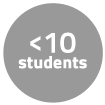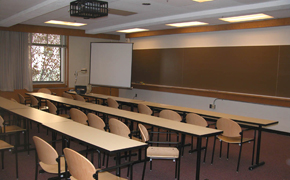This Course at MIT pages are part of the OCW Educator initiative, which seeks to enhance the value of OCW for educators.
This Course at MIT pages provide context for how the course materials published on OCW were used at MIT. They are part of the OCW Educator initiative, which seeks to enhance the value of OCW for educators.
Course Overview
This page focuses on the course 1.84 Atmospheric Chemistry as it was taught by Professor Jesse Kroll in Fall 2013.
This class provides a detailed survey of the chemical reactions occurring in the Earth’s atmosphere, with a particular focus on those important for climate and air quality. The emphasis of the class is on the reactivity of key classes (families) of atmospheric species, with chemical/mechanistic complexity steadily increasing over the course of the semester. The emphasis of the lectures is on current topics of interest and results from the recent literature.
Course Outcomes
Course Goals for Students
To have a working understanding of the most important reactions (and their broad implications) in atmospheric chemistry, so that these can be applied within a wider context (laboratory/field measurements, modeling, etc).
Curriculum Information
Prerequisites
5.60 Thermodynamics and Kinetics
Requirements Satisfied
None
Offered
Every fall semester
Assessment
The students' grades were based on the following activities:
 30% Problem sets
30% Problem sets 30% Midterm exam
30% Midterm exam 10% Class presentation
10% Class presentation 30% Final project
30% Final projectStudent Information

Breakdown by Year
Most students who take this course are graduate students, primarily from Ph.D. programs.
Breakdown by Major
Students are mostly from the Civil and Environmental Engineering or Earth, Atmospheric, and Planetary Sciences departments (~50-50 split); other departments include Chemical Engineering and Engineering Systems Division.
Typical Student Background
A working understanding of college-level introductory chemistry.
During an average week, students were expected to spend 12 hours on the course, roughly divided as follows:
Lecture
- Met 2 times per week for 1.5 hours per session; 24 sessions total; mandatory attendance.
- The midterm exam and final project presentations took place during class sessions in lieu of lecture.
Out of Class
- Read the textbook excerpts
- Complete homework assignments
- Study for the exam
- Work on the final project
Semester Breakdown
| WEEK | M | T | W | Th | F |
|---|---|---|---|---|---|
| 1 |  |  |  |  |  |
| 2 |  |  |  |  |  |
| 3 |  |  |  |  |  |
| 4 |  |  |  |  |  |
| 5 |  |  |  |  |  |
| 6 |  |  |  |  |  |
| 7 |  |  |  |  |  |
| 8 |  |  |  |  |  |
| 9 |  |  |  |  |  |
| 10 |  |  |  |  |  |
| 11 |  |  |  |  |  |
| 12 |  |  |  |  |  |
| 13 |  |  |  |  |  |
| 14 |  |  |  |  |  |
| 15 |  |  |  |  |  |
| 16 |  |  |  |  |  |
 No classes throughout MIT
No classes throughout MIT Lecture session
Lecture session Guest lecture
Guest lecture Problem set due date
Problem set due date No class session scheduled
No class session scheduled Student presentations
Student presentations Midterm exam
Midterm exam

 Room 1 of 1
Room 1 of 1 